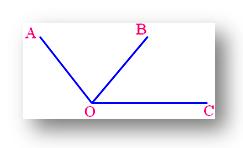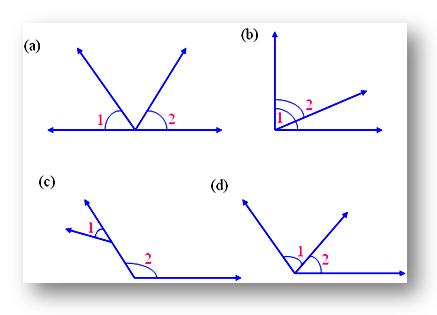Subscribe to our ▶️ YouTube channel 🔴 for the latest videos, updates, and tips.
Adjacent Angles
Two angles are said to be adjacent angles, if;
(i) they have a common vertex,
(ii) they have a common arm and
(iii) the other arms of the two angles lie on opposite sides of the common arm.
The given figure below shows a pair of adjacent angles:
(i) they have a common vertex (O).
(ii) they have a common arm (OB) and (iii) the other arms OA and OC of the two angles are on opposite sides of the common arm OB.
Explanation:
∠AOB and ∠BOC have the common vertex O. Also they have a common arm OB and their other arms OA and OC lie on the opposite sides of the common arm OB. Therefore, ∠AOB and ∠BOC are adjacent angles.
∠AOC and ∠AOB are not adjacent angles, because their other arms OC and OB are not on the opposite sides of the common arm OA.
Worked-out problems on adjacent angles:
Are the following angles adjacent? Give reasons.
Solution:
(a) ∠1 and ∠2 are not adjacent because they do not have a common arm.
(b) ∠1 and ∠2 are not adjacent because their interiors overlap.
(c) ∠1 and ∠2 are not adjacent because they do not have a common vertex.
(d) ∠1 and ∠2 are adjacent because they have a common arm, a common vertex and interiors do not overlap.
● Lines and Angles
Fundamental Geometrical Concepts
Some Geometric Terms and Results
Complementary and Supplementary Angles
Parallel and Transversal Lines
8th Grade Math Practice
From Adjacent Angles to HOME PAGE
Didn't find what you were looking for? Or want to know more information about Math Only Math. Use this Google Search to find what you need.




New! Comments
Have your say about what you just read! Leave me a comment in the box below. Ask a Question or Answer a Question.